Santosh Kumar Cheekatmalla
Fixed-point quantization aware training for on-device keyword-spotting
Mar 04, 2023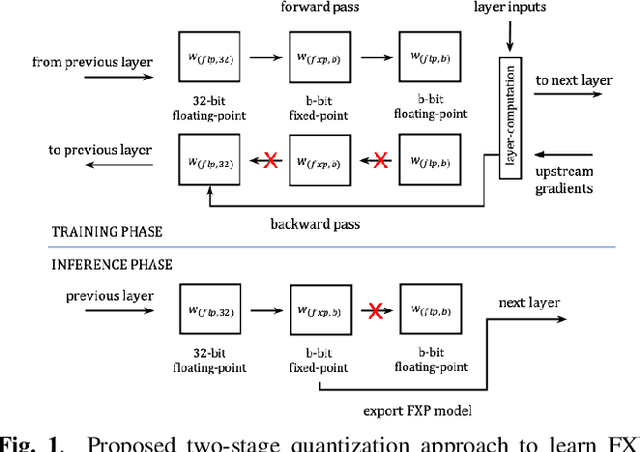
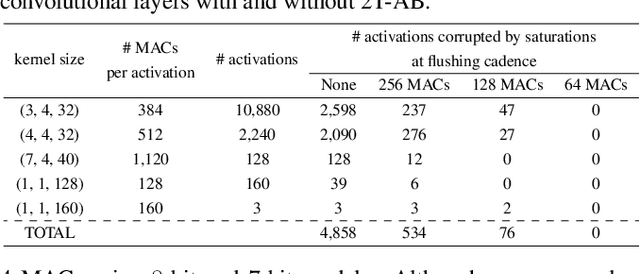
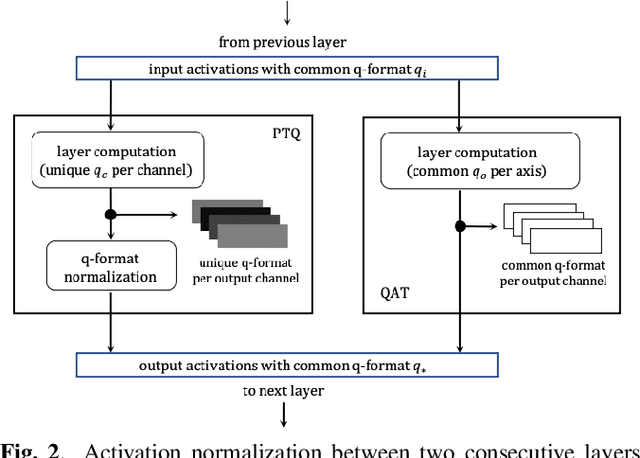

Abstract:Fixed-point (FXP) inference has proven suitable for embedded devices with limited computational resources, and yet model training is continually performed in floating-point (FLP). FXP training has not been fully explored and the non-trivial conversion from FLP to FXP presents unavoidable performance drop. We propose a novel method to train and obtain FXP convolutional keyword-spotting (KWS) models. We combine our methodology with two quantization-aware-training (QAT) techniques - squashed weight distribution and absolute cosine regularization for model parameters, and propose techniques for extending QAT over transient variables, otherwise neglected by previous paradigms. Experimental results on the Google Speech Commands v2 dataset show that we can reduce model precision up to 4-bit with no loss in accuracy. Furthermore, on an in-house KWS dataset, we show that our 8-bit FXP-QAT models have a 4-6% improvement in relative false discovery rate at fixed false reject rate compared to full precision FLP models. During inference we argue that FXP-QAT eliminates q-format normalization and enables the use of low-bit accumulators while maximizing SIMD throughput to reduce user perceived latency. We demonstrate that we can reduce execution time by 68% without compromising KWS model's predictive performance or requiring model architectural changes. Our work provides novel findings that aid future research in this area and enable accurate and efficient models.
* 5 pages, 3 figures, 4 tables
Tiny-CRNN: Streaming Wakeword Detection In A Low Footprint Setting
Sep 29, 2021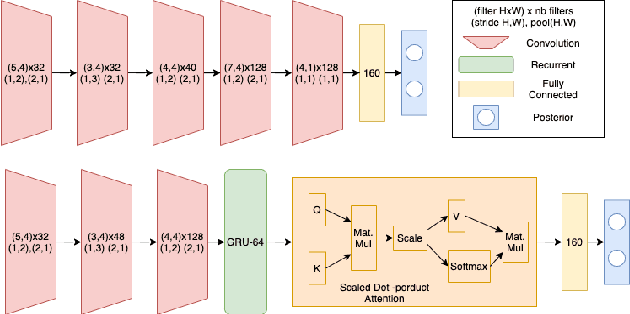
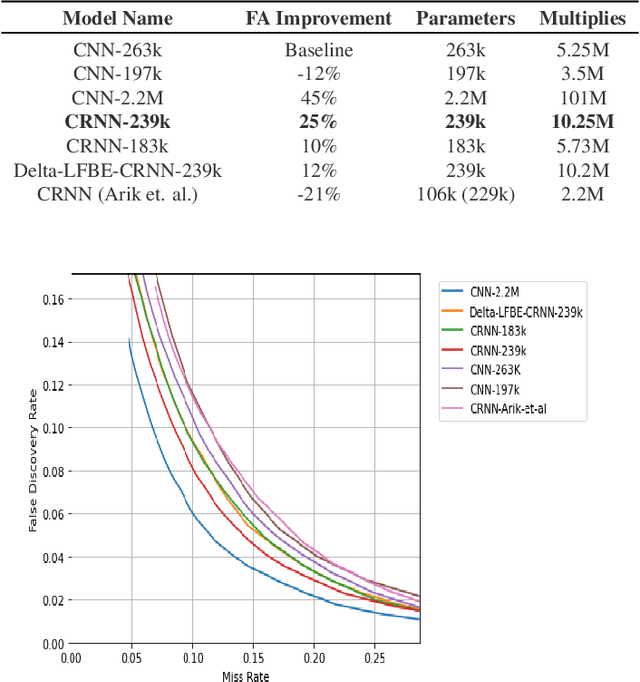
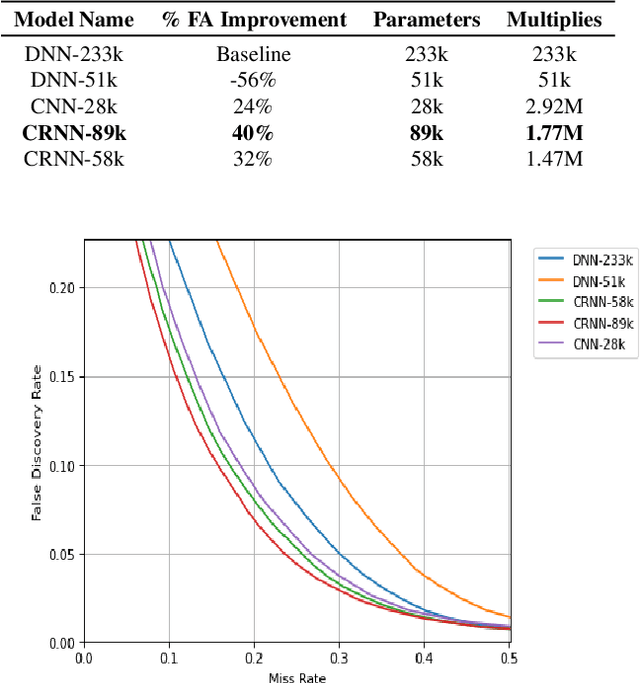
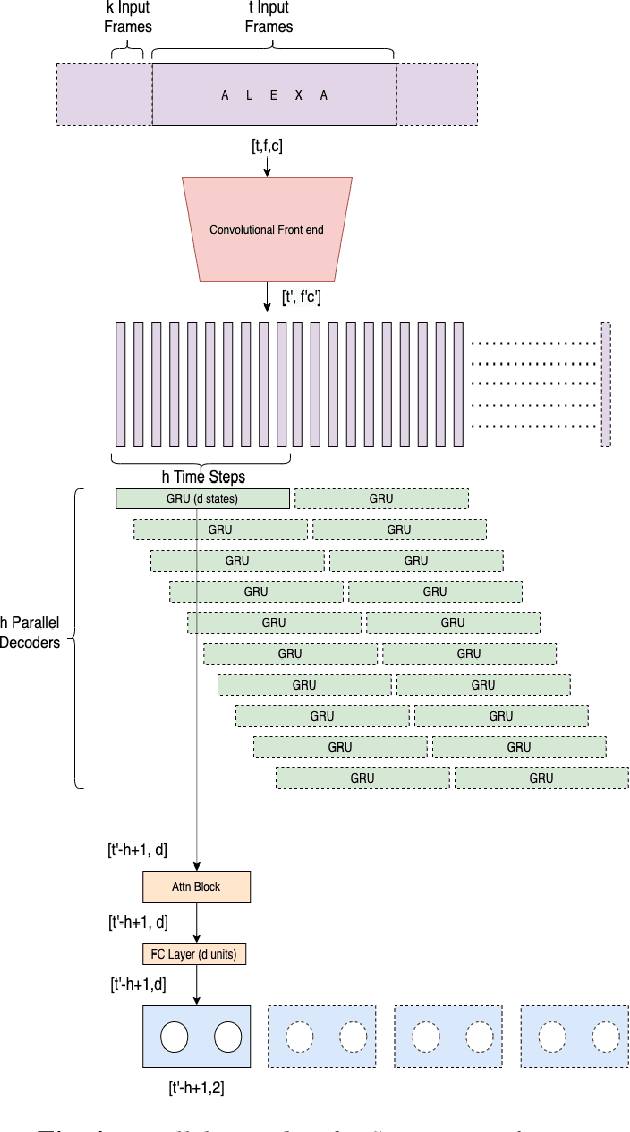
Abstract:In this work, we propose Tiny-CRNN (Tiny Convolutional Recurrent Neural Network) models applied to the problem of wakeword detection, and augment them with scaled dot product attention. We find that, compared to Convolutional Neural Network models, False Accepts in a 250k parameter budget can be reduced by 25% with a 10% reduction in parameter size by using models based on the Tiny-CRNN architecture, and we can get up to 32% reduction in False Accepts at a 50k parameter budget with 75% reduction in parameter size compared to word-level Dense Neural Network models. We discuss solutions to the challenging problem of performing inference on streaming audio with this architecture, as well as differences in start-end index errors and latency in comparison to CNN, DNN, and DNN-HMM models.
 Add to Chrome
Add to Chrome Add to Firefox
Add to Firefox Add to Edge
Add to Edge